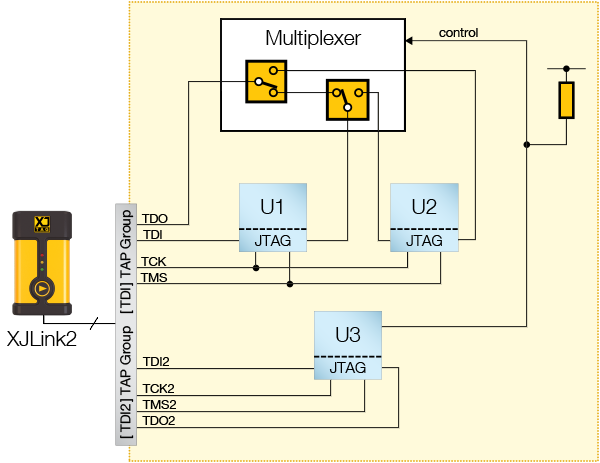Dynamic Chains using Multiplexers
If a JTAG multiplexer or a scan bridge is used in the circuit to add or remove devices from the chain, it is important that the chain defined on the JTAG Chain screen is the one with the maximum number of devices. All the devices that can be in that chain need to be present in the definition of the JTAG chain before attempting to create subchains.
When defining the subchains, the devices can then be selected from the list of what's in the JTAG chain. At this stage, it is not necessary to tell XJDeveloper how those devices will be added or how others will be removed from the chain, but it will assume you are able to do so using Test Reset sequences, and that data clocked out of the board's TDO will be from devices in that subchain.
As an example, consider the JTAG multiplexer used in Figure 11. Before subchains can be set up, the chain on [TDI] must be defined at its maximum length, i.e. to contain both U1 and U2; the chain on [TDI2] will be defined as containing only U3. Once those have been set up, the subchains can be created from the list of devices the JTAG chains contain.

Figure 11: Using a Multiplexer in Dynamic Chains
In this example, a PDD file will need to be created for the multiplexer as part of defining the JTAG chain. See the user guide on Defining JTAG Chains for more information of how to do that.
If a scan bridge is used instead of a multiplexer, it might also need to be added as a JTAG device.
- If you are using a scan bridge that needs to be added as a JTAG device, it is advisable to contact XJTAG Support for advice before doing so.
XJTAG v4.2.0
